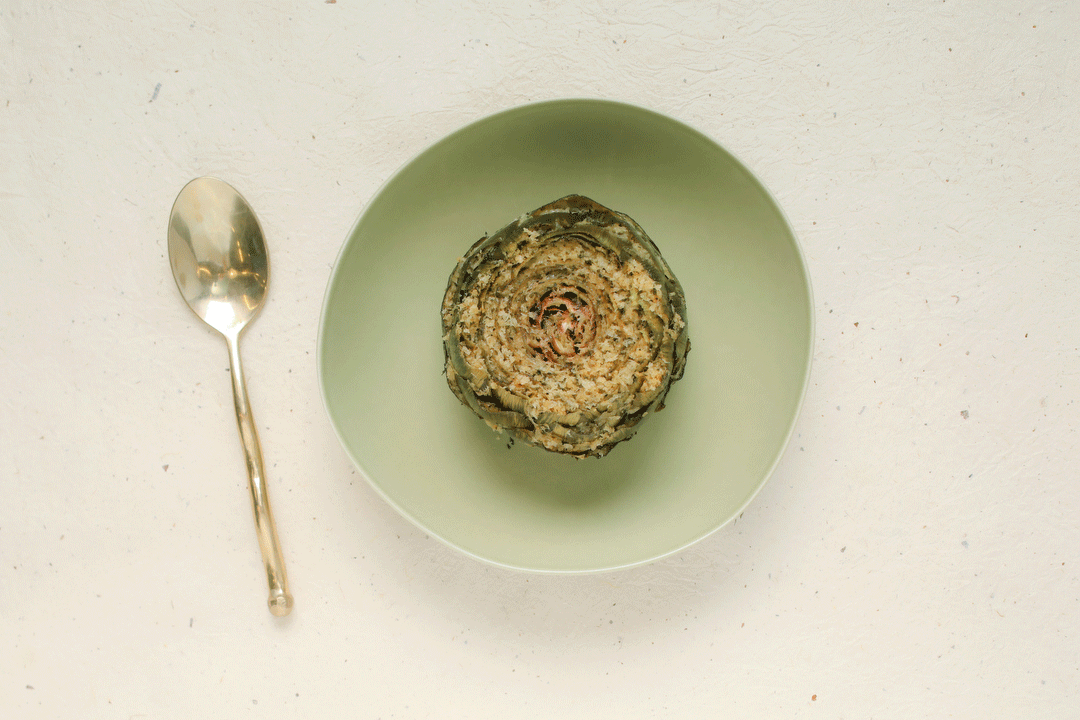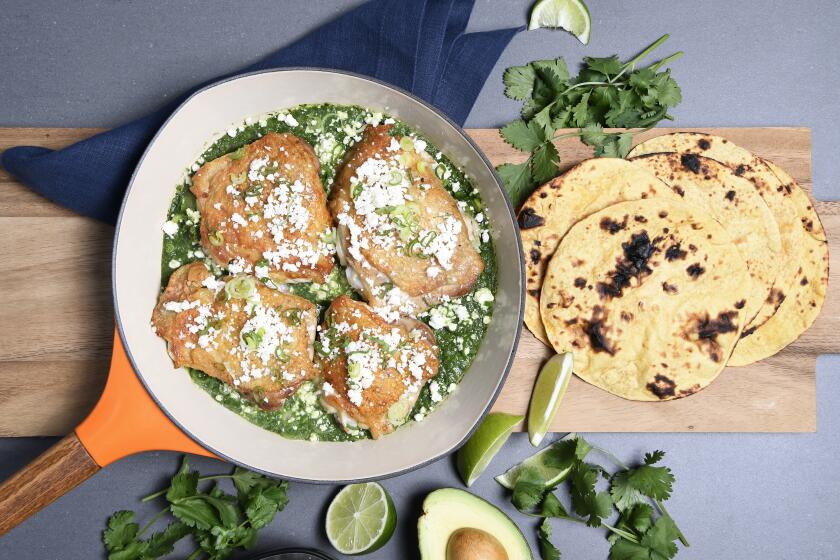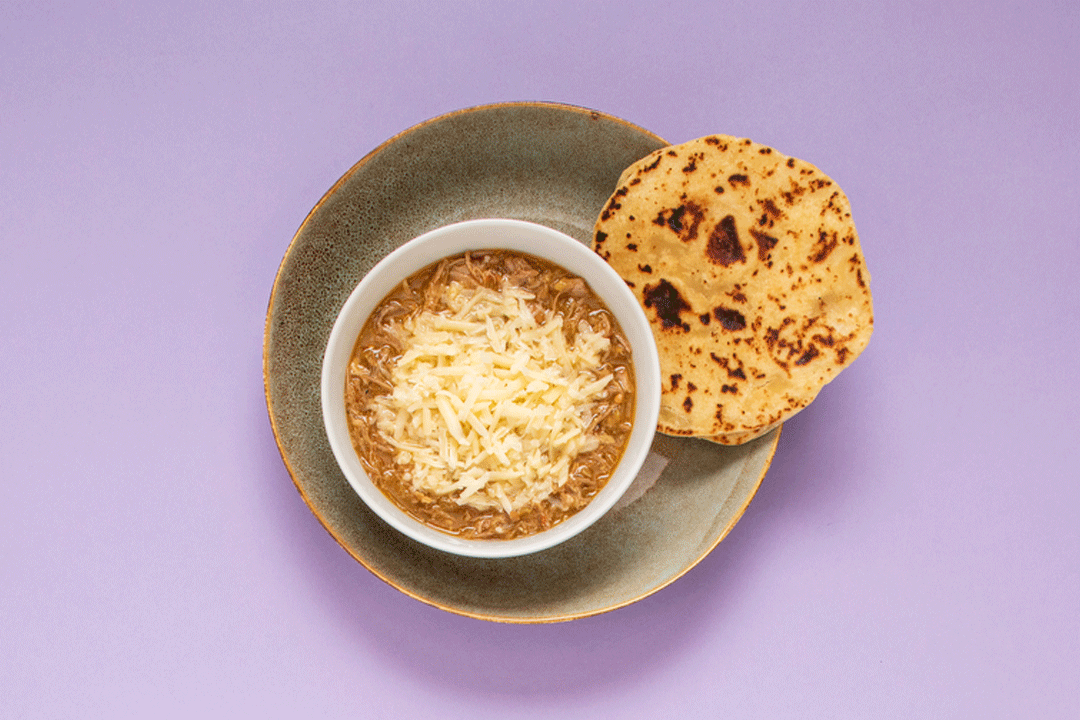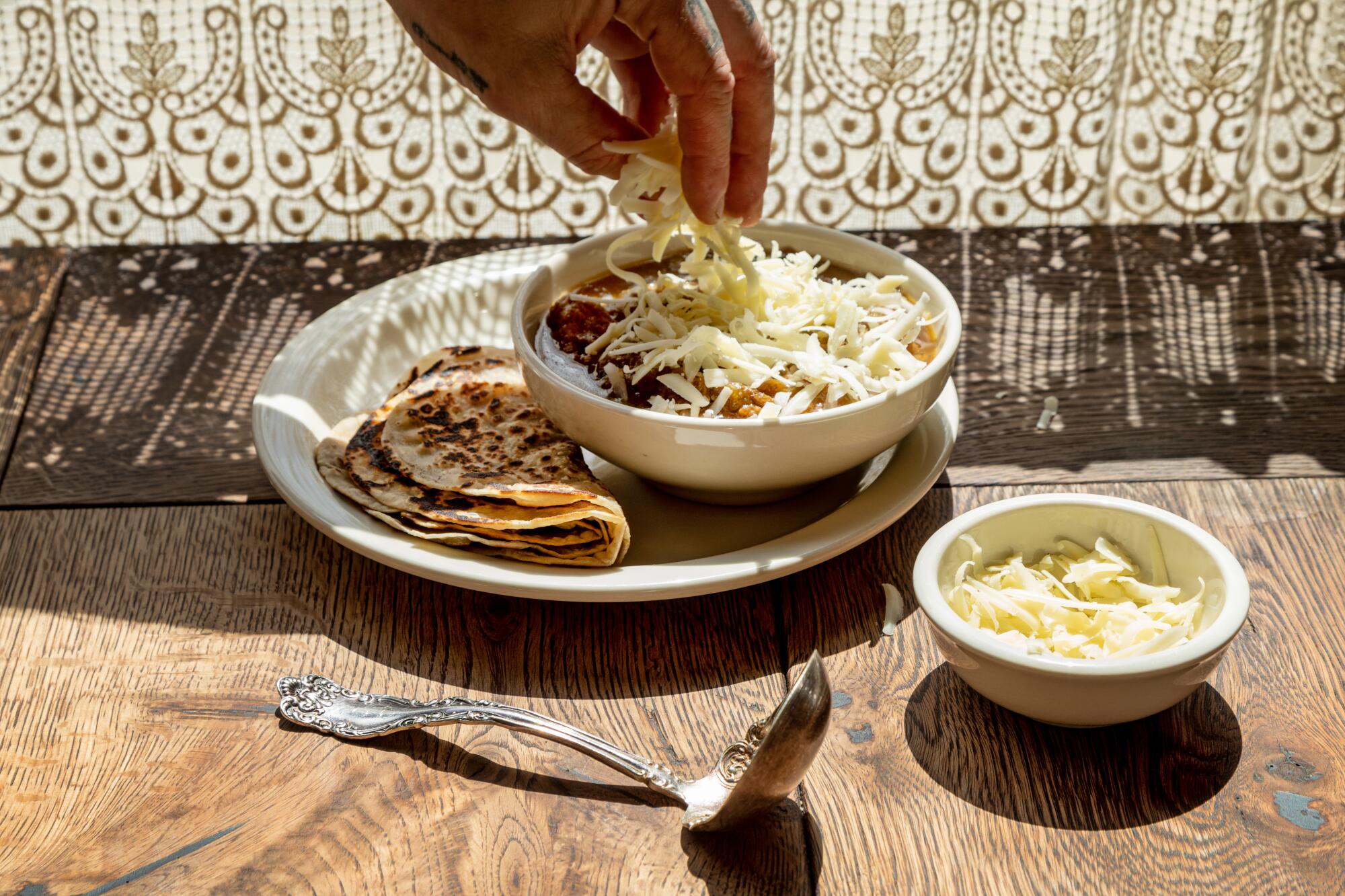
- Share via
Of all the dishes at Dunsmoor restaurant in Glassell Park — cooked over a hearth at chef-owner Brian Dunsmoor’s ode to regional American dining — the one that might leave the greatest impression is a humble bowl of stew. Tender chunks of pork shoulder are braised in an aromatic broth of onions, garlic, serrano chiles and, most notably, green Hatch chiles, which cut through the rich stew with their distinctive piquancy. A pile of soft, grated white cheddar cheese melts on top, and warm flour tortillas hug the bowl. It’s home-style comfort food of the highest order.

Dunsmoor walks a high-low line: A traditional ember-glowing, soot-painted brick hearth is the center of the kitchen, inside a modern L.A. dining room. It’s the balance of honest-to-goodness home cooking and fine dining that has made me return to it again and again.
That cooking is the life’s work of Dunsmoor, who was chef-partner at Hatchet Hall for seven years and before that opened the now-shuttered restaurants the Hart and the Hunter and Wolf in Sheep’s Clothing.
Fresh artichokes are stuffed with bread crumbs, Pecorino Romano cheese, parsley and garlic; drizzled with olive oil; steamed; and then baked until golden.
Dunsmoor grew up in Snellville, Ga., and one of his earliest cooking jobs was as a line cook at chef Hugh Acheson’s Five and Ten restaurant in nearby Athens. Dunsmoor says Acheson — along with Providence chef Michael Cimarusti, with whom Dunsmoor worked when he first moved to Los Angeles — instilled in him a reverence for Southern food and where it comes from. Dunsmoor made it his mission to highlight all regional American food with the same dedication.
“More so than anywhere else I’ve cooked, my cooking at Dunsmoor is rooted in my family,” Dunsmoor says. “I take inspiration from them and focus on smart renditions of regional American classics. I grew up eating black-eyed peas with hambone in the South, but in Colorado, where I’d spend summer with my mom’s side of the family, I’d have this stew with cheese and tortillas. As different as they are, they are both American.”
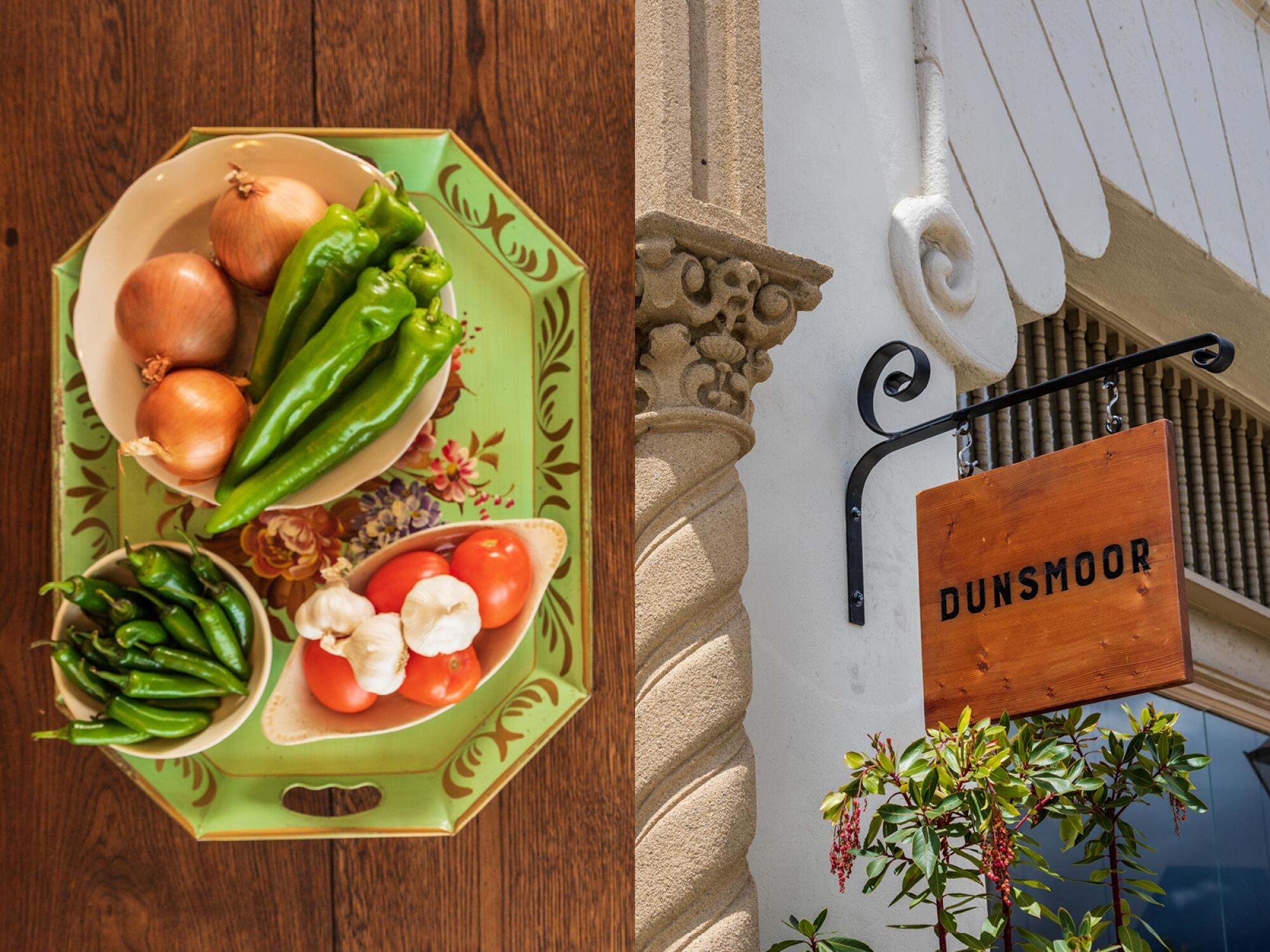
On the menu at Dunsmoor, smoked and cured hams, chicken and dumplings and braised greens all point to the largely Southern-leaning influence of his upbringing. But that stew comes from summer memories of visiting his mother’s side of the family in Fowler, Colo. It wasn’t developed for the restaurant’s menu, but rather re-created as accurately as possible from a recipe by his aunt Emily “Emmy” Nesselhuf.
When I first meet Dunsmoor and ask him to tell me about the recipe, he says he’s not a “recipe guy” because he believes cooking — or, at least, the cooking he’s interested in — evolves each day and changes. “But I can show you how we make it,” he says.
The pork and green chile stew is “Aunt Emmy’s” specialty, and, says Dunsmoor, “everyone makes it, but hers was consistently the best.” She uses pueblo chiles, similar to but spicier than New Mexican Hatch chiles, which she roasts, skins and chops to flavor an otherwise straightforward stew made with aromatics and tender pork shoulder. Pueblo chiles are difficult to source outside Colorado, so Dunsmoor uses a mix of Hatch and serrano chiles.
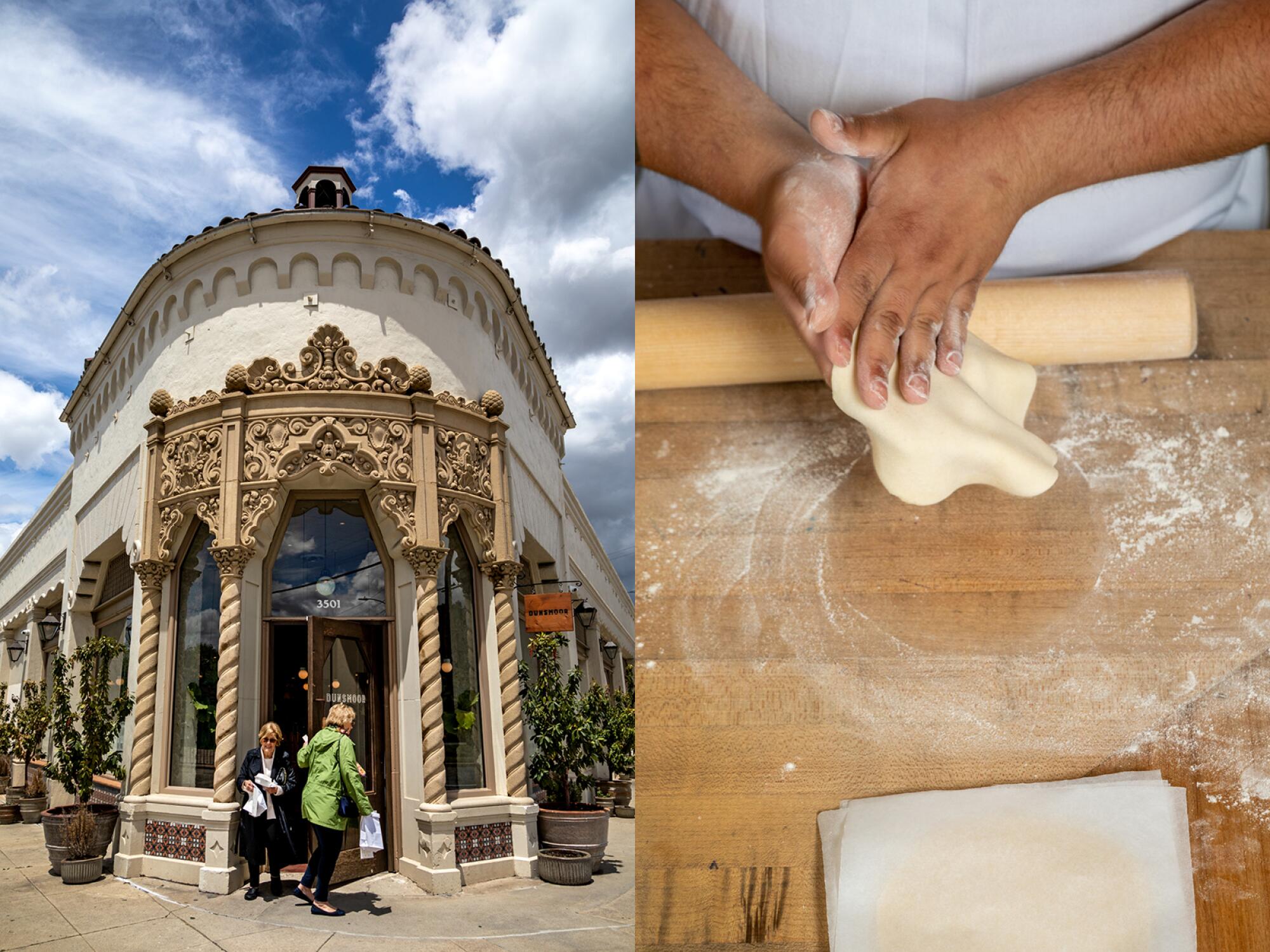
“During the harvest season, those roasted chiles get put into bags, and people buy hundreds of pounds to store in their deep-freezers to use all year round,” Dunsmoor says. “When my aunt would make hers, sometimes it’d be soupy, sometimes more stew-y. She’d use different pork parts, sometimes pork loin, most of the time pork shoulder; she used what she had.”
Since the stew has been on the menu, Dunsmoor has played around with the dish, changing it with the seasons or his mood. In the kitchen, Dunsmoor stands next to line cook Bryan Rueda as Rueda browns large cubes of pork shoulder, rendering out the fat before fishing each deep-mahogany piece out with tongs and throwing in a mountain of expertly diced onions and sliced garlic.
“My mom was too intimidated to cook this stew,” Dunsmoor says. “And I was too, at first, but now I’ve gotten better at it. We’ve learned that if it’s hot out or summertime and we want a more vibrant stew, we just brown the meat and veg less so it tastes brighter and lighter. And then when it’s colder out, we brown everything longer, which intensifies their flavors and makes it more comforting.”
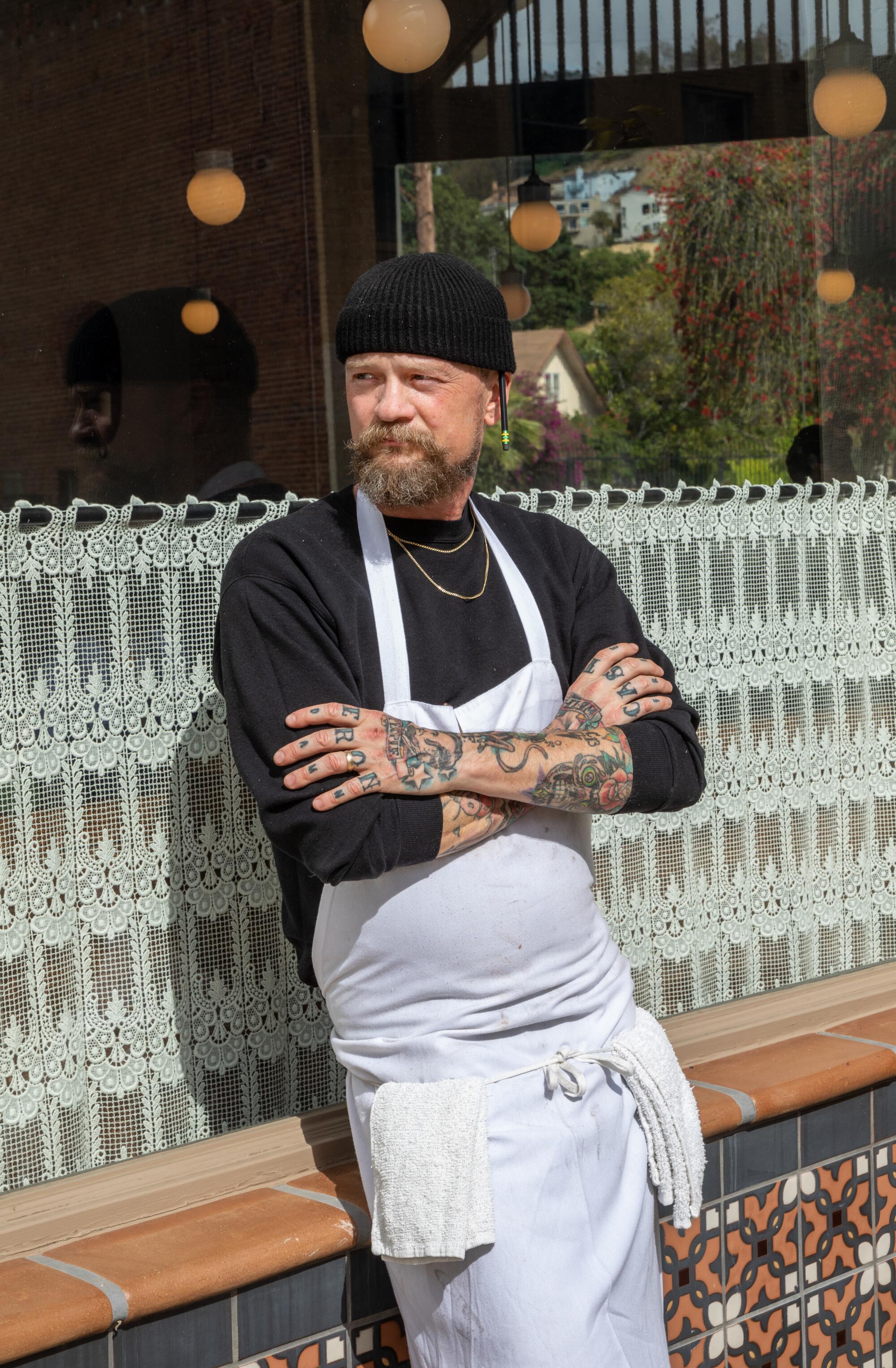
After the aromatics reduce and lift all the fond — the browned bits stuck to the bottom of the pan that give the stew its depth of flavor — off the bottom of the pot, Rueda topples in literal gallons of the chopped green Hatch chiles. Dunsmoor uses them because they’re easier to procure than the Pueblo chiles. But to bump the heat up to Pueblo levels, he adds handfuls of thinly sliced fresh serrano chiles.
“My childhood was at this nexus of Mexican, Native American and ranch land cuisines — food is very opinionated there,” says Dunsmoor. “And that’s what I want to highlight at the restaurant — not chef-y, showoff techniques — but smart renditions of regional American classics. And it all is rooted in the cooking of my family that I grew up with.”
Spring offers an opportunity to focus on the wonderful qualities onions bring to a dish, from relishes with heat to braised chicken and tacos with a vibrant sharpness.
Once the chiles start bubbling away, Rueda adds the pork back in and the bright green elixir simmers away for hours until the pork is tender.
The stew handily stands as a metaphor for the blending of heritages and cooking styles at work in Dunsmoor’s kitchen. His Aunt Emmy would serve the stew with grated cheddar and store-bought flour tortillas, but when Dunsmoor decided to put the stew on the menu, he knew he wanted to serve it with homemade tortillas. He tapped another of his cooks, Juan Ruiz, to come up with tortillas that fill the bill.
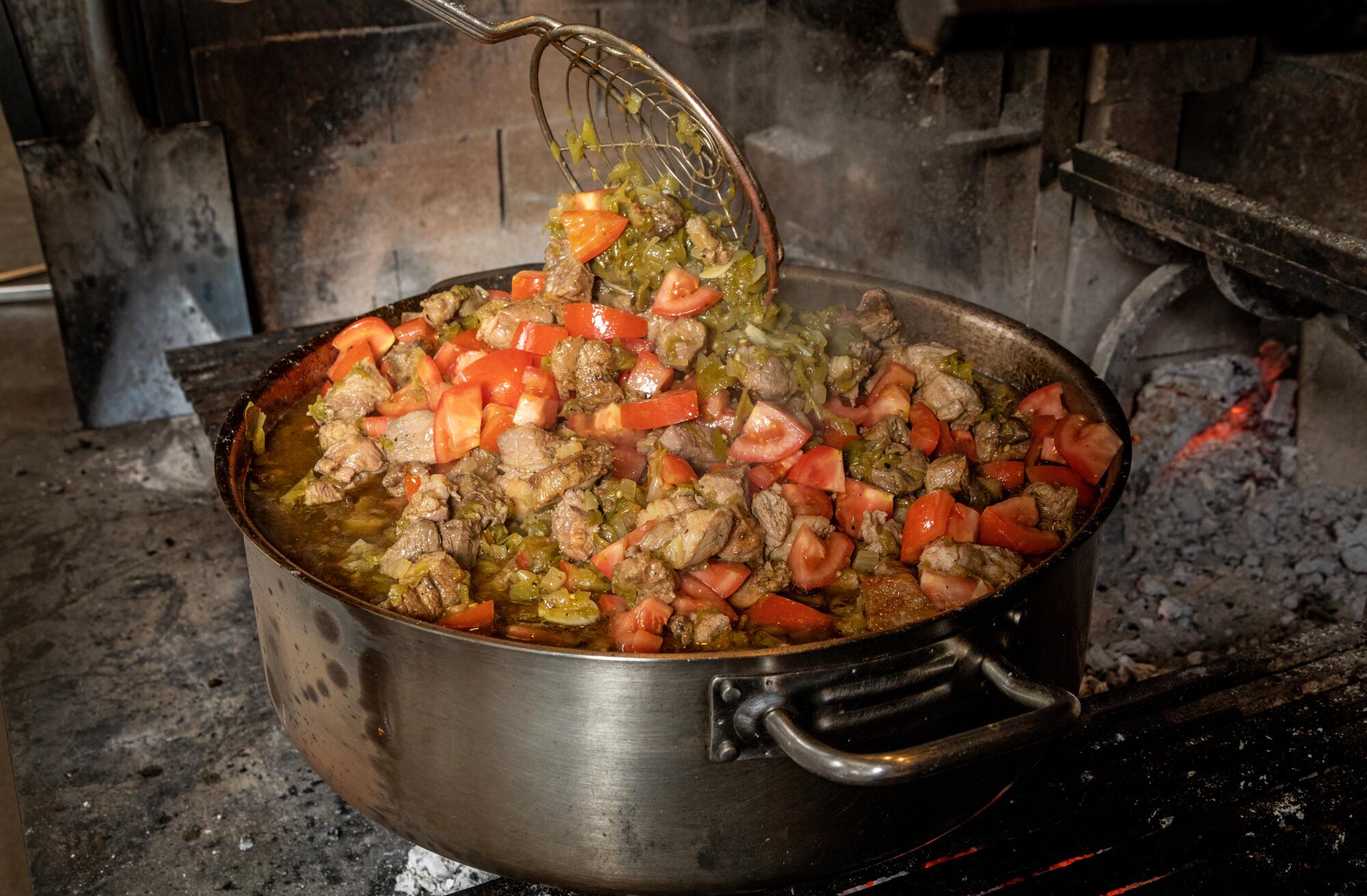
“Growing up, my mom would make fresh tortillas out of corn every Sunday for tacos de lengua,” Ruiz says. “But on days when I’d work in the grape fields outside Richmond, where I’m from, she’d use flour tortillas to make me, like, five burritos filled with whatever we had for dinner the night before, some eggs and beans, or even eggs and hot dogs to pack for my lunch. So her tortillas were a big part of my daily life.”
Like Dunsmoor’s Aunt Emmy, Ruiz’s mom, Silvia Leticia Ruiz Huerta, used store-bought flour tortillas for those burritos, so when he asked for the recipe, she instead pointed him to a friend at her church, Maria Alvarez, who she said made the best. Alvarez eyeballed all the measurements, so Ruiz had to figure out the recipe himself, using just the ingredients his mom passed along to him.
One of the unique characteristics of the tortillas is that they’re made with butter and farmers cheese, giving them a delicate plushness. Ruiz makes a fresh batch of farmers cheese before each round of tortillas and has experimented with it to suit his tastes.
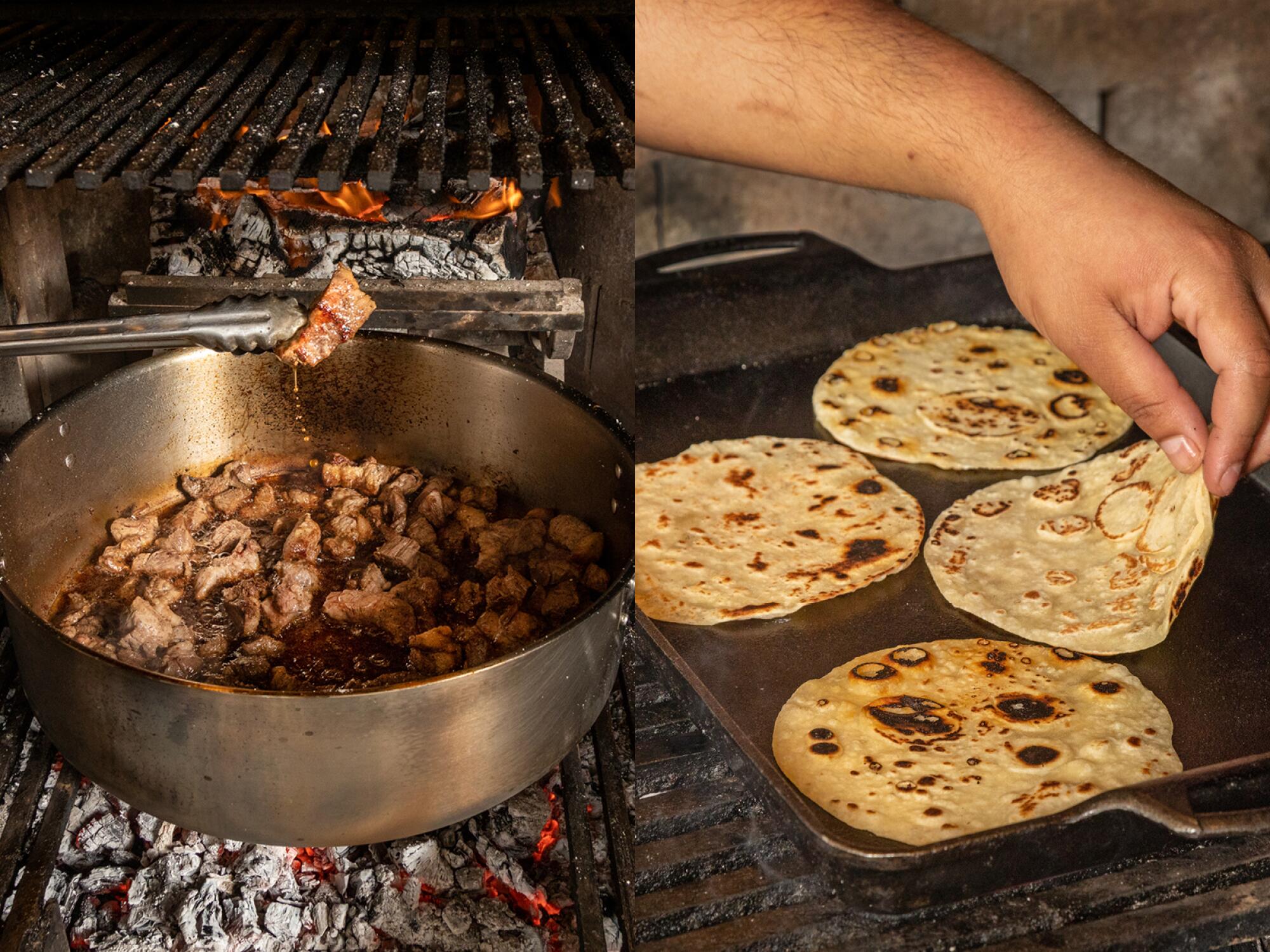
“In the recipe, she used lemon juice to make the cheese, but I played around with lime juice and loved it,” Ruiz says. “I feel like it makes the tortillas tangier, and they come out fluffier too.”
Ruiz rolls out each ball of dough by hand into soft rounds. “Tortilla presses don’t work here,” he says, “it just makes the tortillas tough and they spring back, so you gotta be patient.”
He plops one on the flat-top grill to cook. The tortilla bubbles and inflates like a pillow, gathering lightly charred edges and blisters along the way. He hands it to me and tops it with a spoonful of chilaquiles that had been made for the staff’s family meal. He smiles and says, “Enjoy!”
Watching the collective effort of Dunsmoor, Ruiz, Rueda and chef de cuisine Manuel Mendoza — who’s worked with Dunsmoor for the last seven years — reveals the real-time evolution of the dish. It’s a testament to food that transforms from day to day, not tied down to recipes or strict ways of dictating how a dish should be cooked.
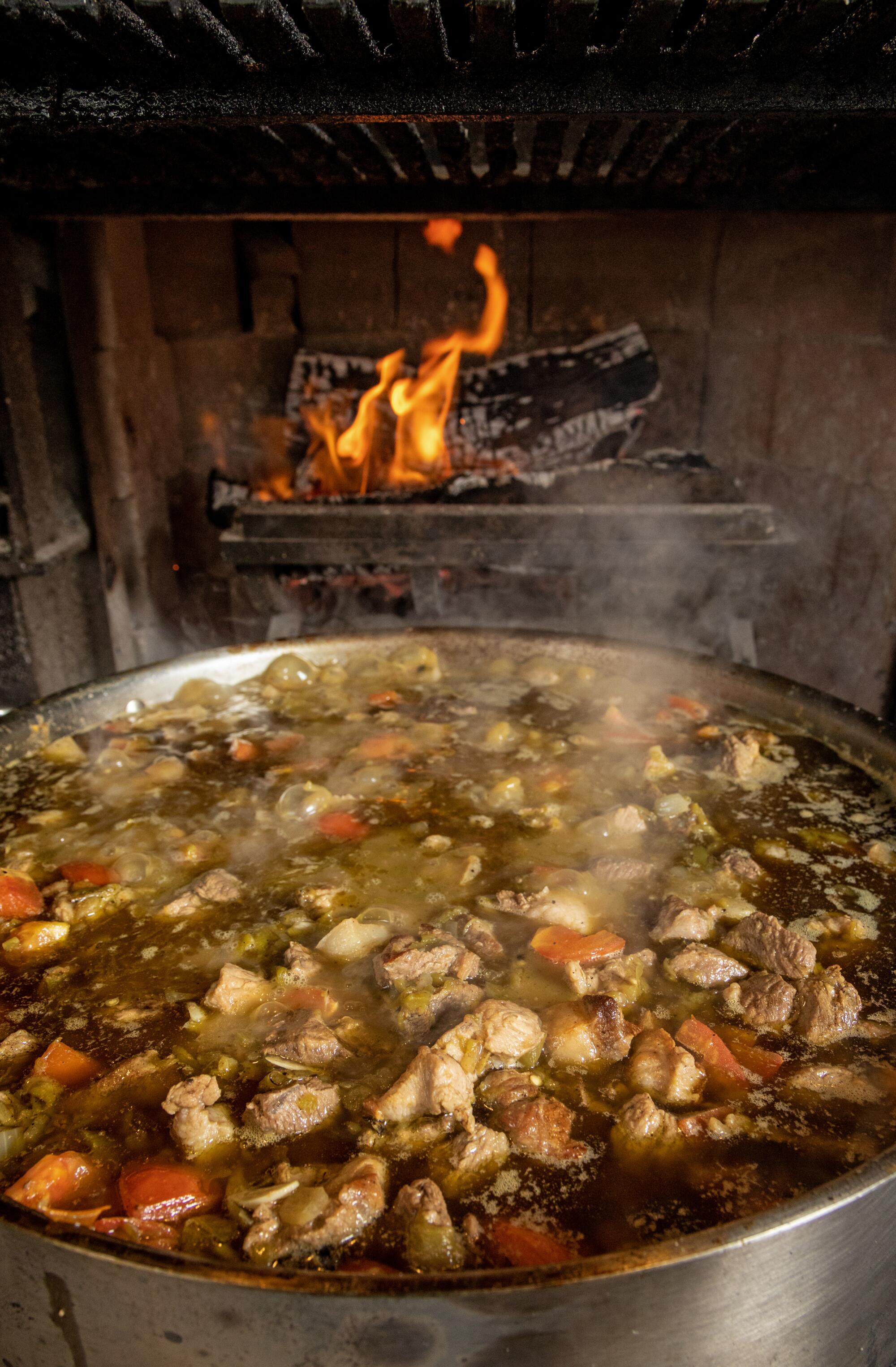
Documenting the recipe now marks a progression on its current path, where along the way each cook has added his own imprint to a dish that holds meaning and history for Dunsmoor. Ruiz’s tortillas — which themselves bear his mother’s lessons and Alvarez’s family history — have become part of a beloved dish that started out as a mainstay of rural Colorado home cooking and is now served at a restaurant in Los Angeles. Who knows what might shift the direction of this dish in the future?
“It’s funny because, out of all the things we cook, everyone loves the stew the most,” Dunsmoor says. “I think we’ve improved upon it a little for the restaurant, but otherwise, it’s the same as it’s always been. Seeing how everyone loves it and responds to it really validates why I loved it in the first place too. My aunt’s going to lose her mind when she sees it in print.”
Get the recipe:
Pork and Green Chile Stew
More to Read
Eat your way across L.A.
Get our weekly Tasting Notes newsletter for reviews, news and more.
You may occasionally receive promotional content from the Los Angeles Times.
